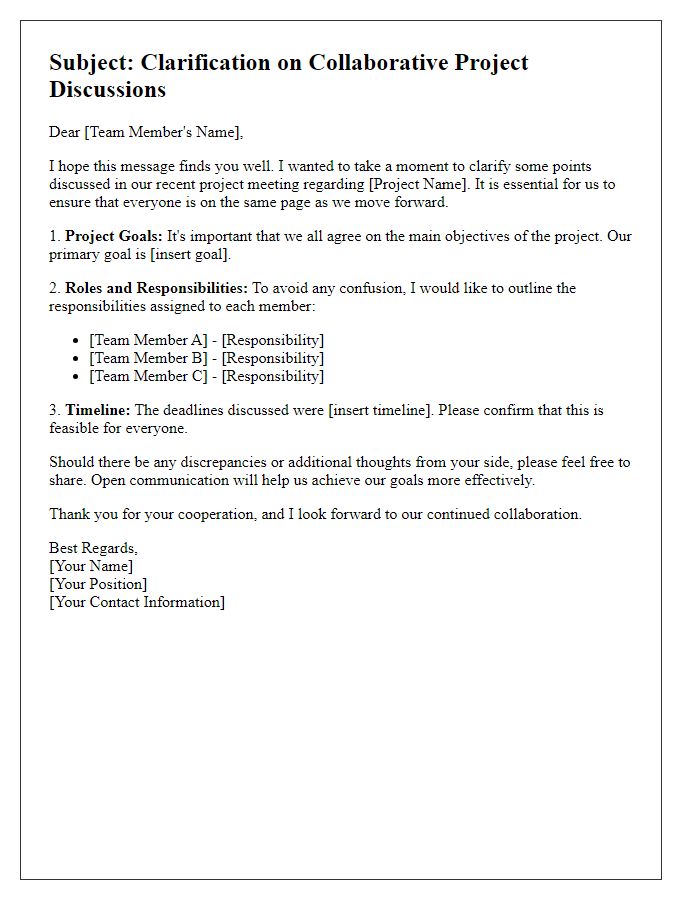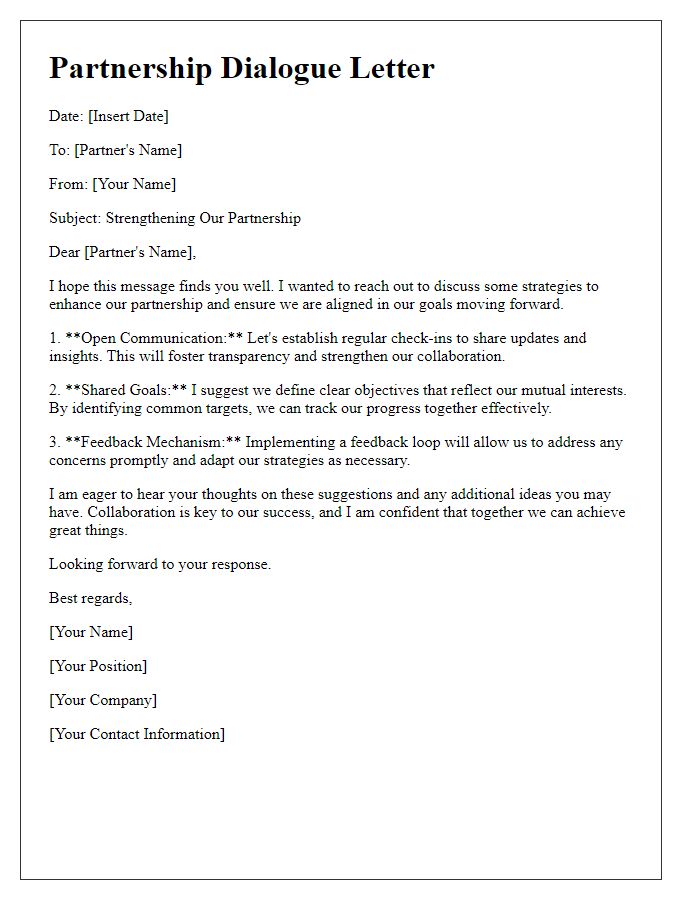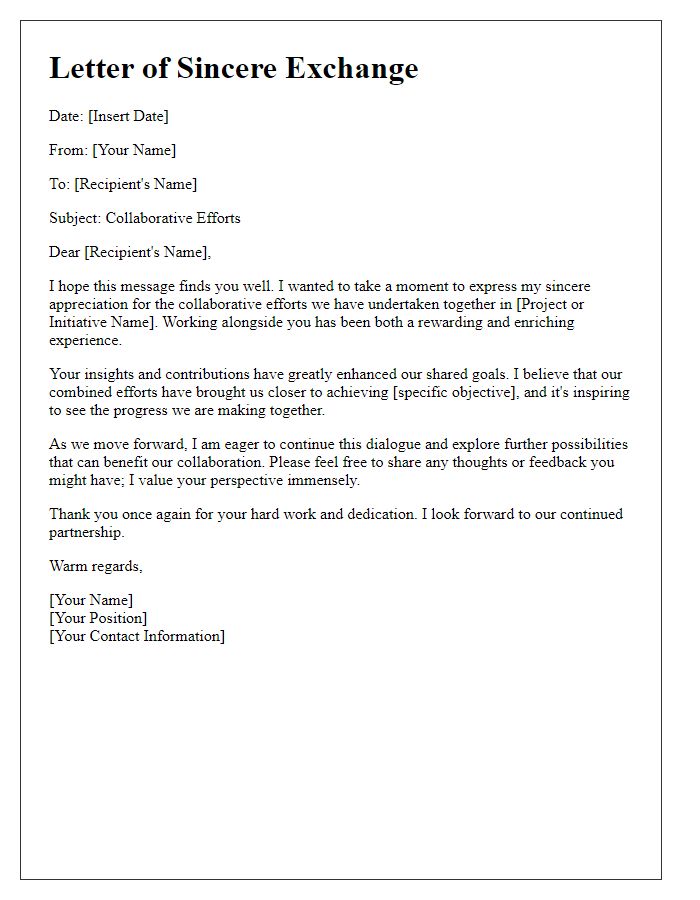In today's fast-paced world, clear and transparent communication is the cornerstone of successful partnerships. Whether you're collaborating with a colleague, vendor, or client, setting the stage for open dialogue can significantly enhance trust and productivity. This article delves into the essential elements of crafting effective letters that promote transparency in partnership communication. Join us as we explore practical templates and tips to foster stronger relationships and ensure everyone is on the same page.

Clarity of Intentions
Transparent communication in partnerships fosters trust and alignment, particularly in business endeavors. Clearly articulated intentions, including project scope, goals, and responsibilities, serve as foundational elements. Regular updates on progress, financial commitments, and resource allocations are crucial for maintaining accountability. Establishment of communication channels, such as designated contact points, weekly meetings, and shared digital platforms, enables seamless dialogue. Defined metrics for success, including key performance indicators (KPIs) and timelines, provide clear benchmarks for evaluation. Encouraging open feedback loops enhances collaboration and encourages proactive problem-solving within the partnership.
Open Channels for Dialogue
Open channels for dialogue can enhance transparency in partnership communication, promoting trust and collaboration among stakeholders. Establishing regular check-in meetings (bi-weekly or monthly) enables partners to share project updates, address challenges, and discuss strategy adjustments. Utilizing digital platforms such as Slack, Microsoft Teams, or Zoom can facilitate real-time communication, breaking down geographical barriers. Documenting discussions in shared Google Drive folders ensures that all partners have access to essential information. Encouraging feedback sessions allows for continuous improvement and fosters an environment where all voices are valued. Creating a shared project management tool like Asana or Trello can help track progress and maintain accountability among team members. These practices contribute significantly to a culture of openness, ensuring that partners remain aligned and informed throughout collaborative efforts.
Consistent Information Updates
Consistent information updates serve as a cornerstone for transparent partnerships, promoting trust among stakeholders. Regular communication schedule, such as weekly reports or bi-weekly meetings, allows partners to stay informed about project developments, changes in timelines, and emerging challenges. Utilizing collaborative platforms like Slack or Microsoft Teams enhances accessibility to important documents and announcements, fostering a culture of openness. Clear documentation of discussions and decisions strengthens accountability, ensuring all parties understand their roles and responsibilities within the partnership. Feedback mechanisms, such as surveys or suggestion boxes, encourage active participation from all partners, further reinforcing the commitment to transparent and effective communication.
Accountability and Responsibility
Transparency in partnership communication fosters accountability and responsibility among stakeholders. Open dialogue promotes trust and encourages both parties to share crucial information, including project updates, progress metrics, and challenges encountered. Regular meetings, such as weekly check-ins, enable partners to align their objectives, discuss key performance indicators (KPIs), and assess the effectiveness of strategies implemented. Documenting discussions through shared platforms, like Google Docs or Trello, enhances visibility and retention of important decisions made. Furthermore, fostering a culture of feedback encourages partners to express concerns or suggestions, ensuring that responsibilities are clearly understood and met. Overall, transparent communication cultivates a robust partnership built on mutual respect and shared goals.
Mutual Trust and Respect
Transparent communication fosters mutual trust and respect in partnerships. Clear dialogue ensures all parties align on goals, expectations, and responsibilities, preventing misunderstandings. Regular updates, such as weekly progress reports, maintain engagement and accountability. Open channels for feedback encourage constructive criticism, enhancing collaboration and problem-solving. Trust develops through consistent actions and integrity, reinforcing commitment to shared objectives. In successful partnerships, respect is manifested through active listening, valuing diverse perspectives, and acknowledging each other's contributions, strengthening the foundation for long-term cooperation and success.













Comments